The Microsoft Surface Duo — how it became the thinnest foldable device in the world
This is how Microsoft managed to do the impossible
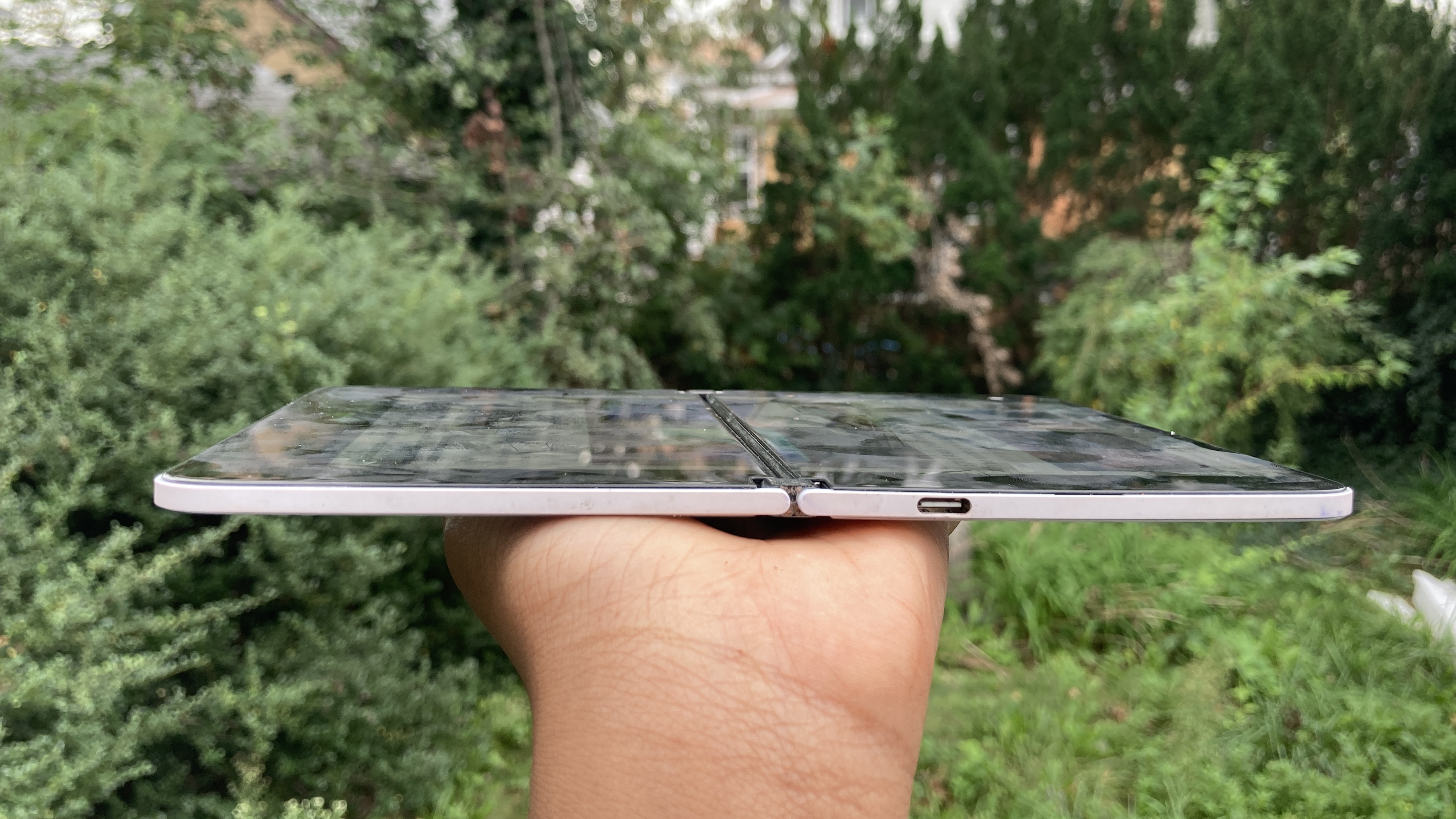
The Microsoft Surface Duo may still have a few kinks to iron out with its UI, and the Redmond-based tech giant is promising firmware updates to ensure a smoother experience, but its hardware is seemingly flawless.
When unfolded, the Surface Duo is the thinnest foldable device on the market with just 0.18 inches of thinness. It's also a featherweight device, weighing only 0.5 pounds. Think about it — the Duo is as thin as the width of a USB-C port! But how did Microsoft manage to accomplish this feat? Let's dive into the marvel of the Surface Duo hardware.
- The Microsoft Surface Duo review
- The Microsoft Surface Duo — why it's screen isn't bendy like the Galaxy Z Fold 2
How Microsoft got the Surface Duo to become the world's thinnest foldable
At a late August briefing, Microsoft told tech reviewers that they were obsessed with the proportions of the Surface Duo. They wanted the Surface Duo to be 0.18 inches thin and they refused to budge on that measurement — even if it meant having to overcome difficult hurdles due to the limitations of space.
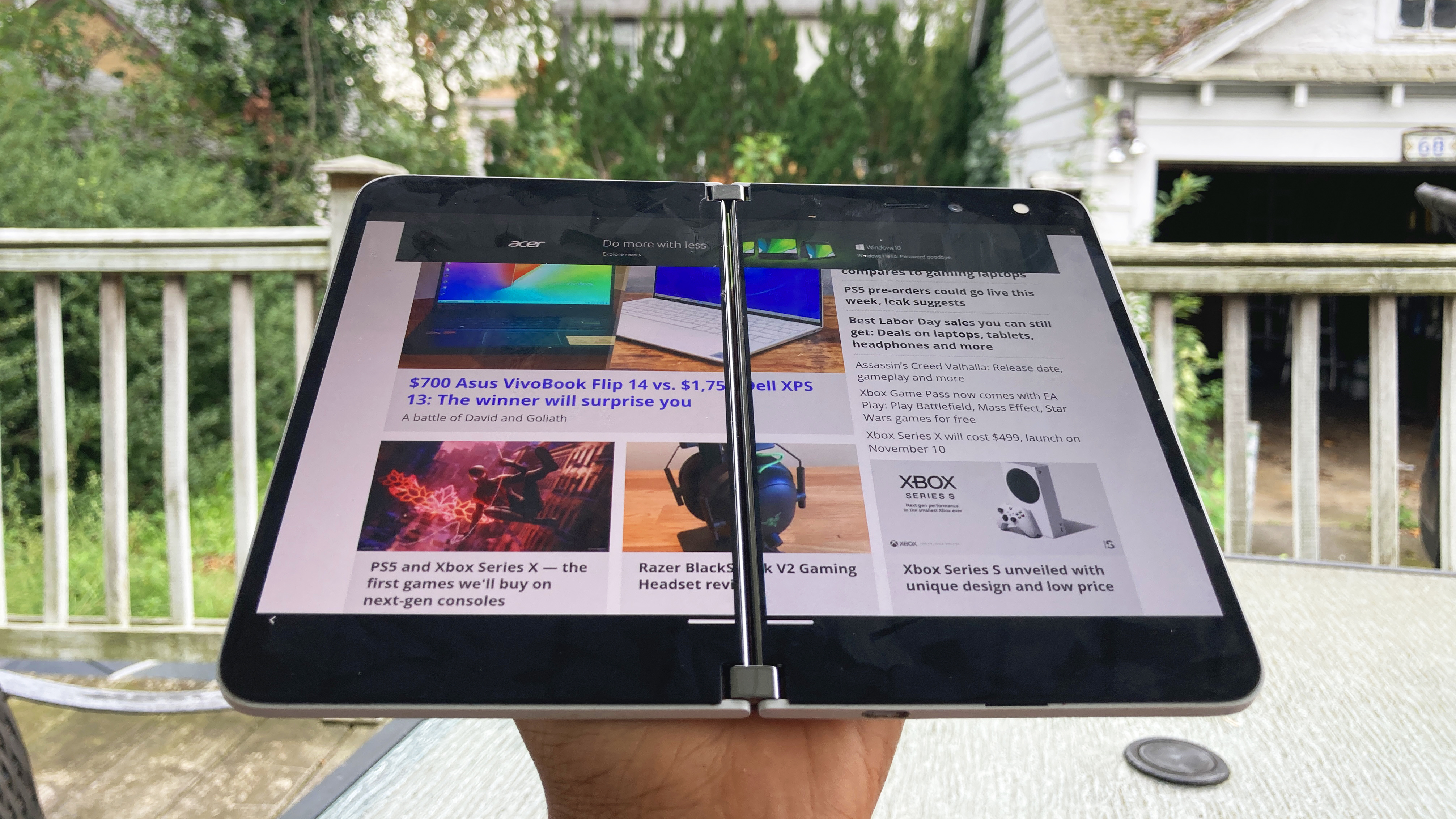
One of those hurdles is the realization that there is no off-the-shelf hardware components that Microsoft could use for the Surface Duo that would accommodate a 0.18-inch thin dual-screen device. As a result, Microsoft had to innovate and invent their own components to launch the thinnest foldable in the world.
One of the first things Microsoft engineers had to invent for the Surface Duo is new antennas. Off-the-shelf antennas simply would not fit snugly inside the Surface Duo's thin envelope. Secondly, engineers had to invent new ultra-thin cables that carry power, data and control signals between the Surface Duo's two hemispheres. In order to make these cables thin, the Duo team had to invent a special alloy to make 'em two-hundredths of a millimeter thin, which is thinner than a human hair strand.
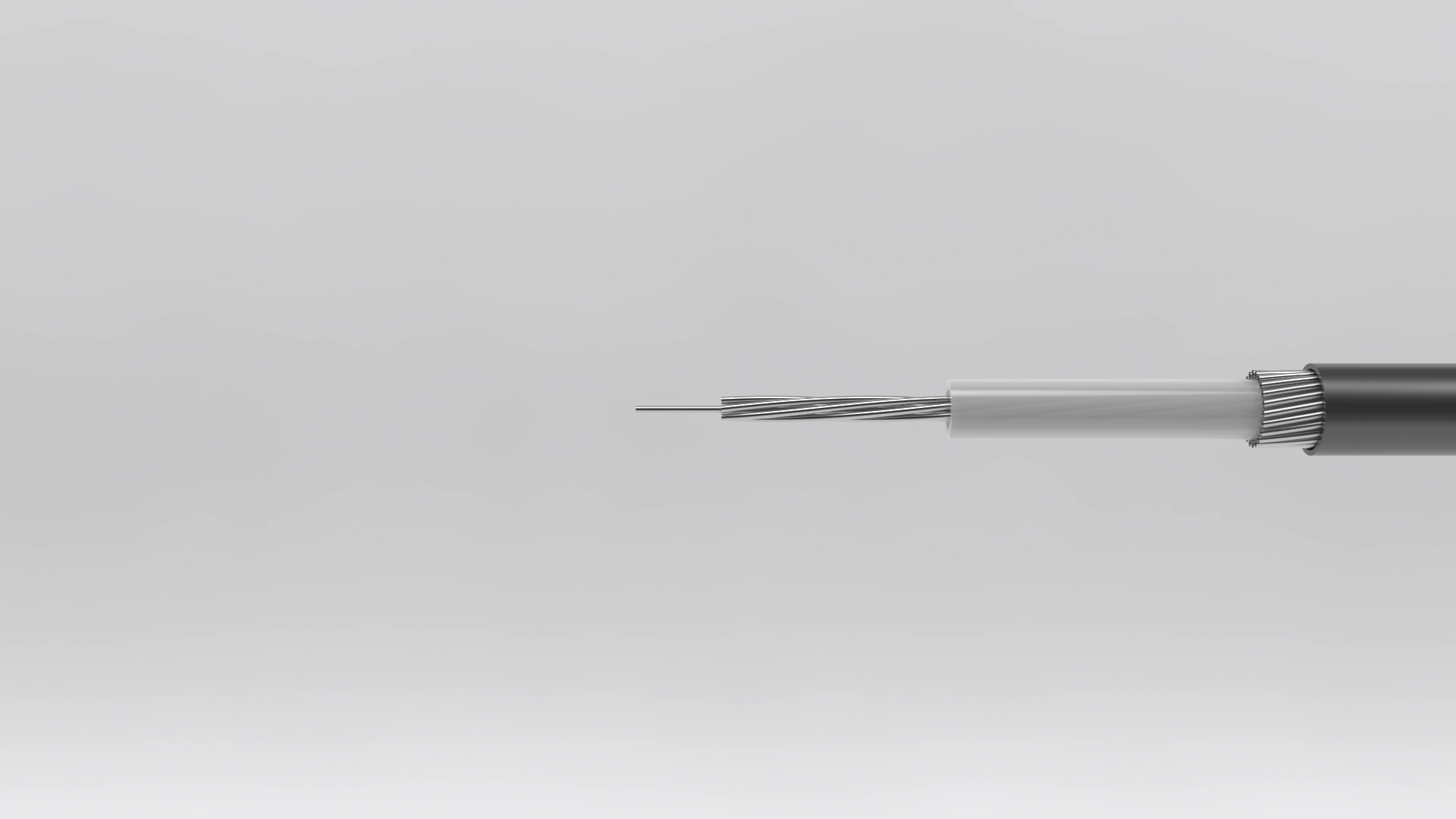
If you look at the image below, you can see that 56 hair-thin cables are routed between the two displays via Surface Duo's two 360-degree hinges, which is another hardware component that Microsoft had to reinvent to create the Surface Duo.
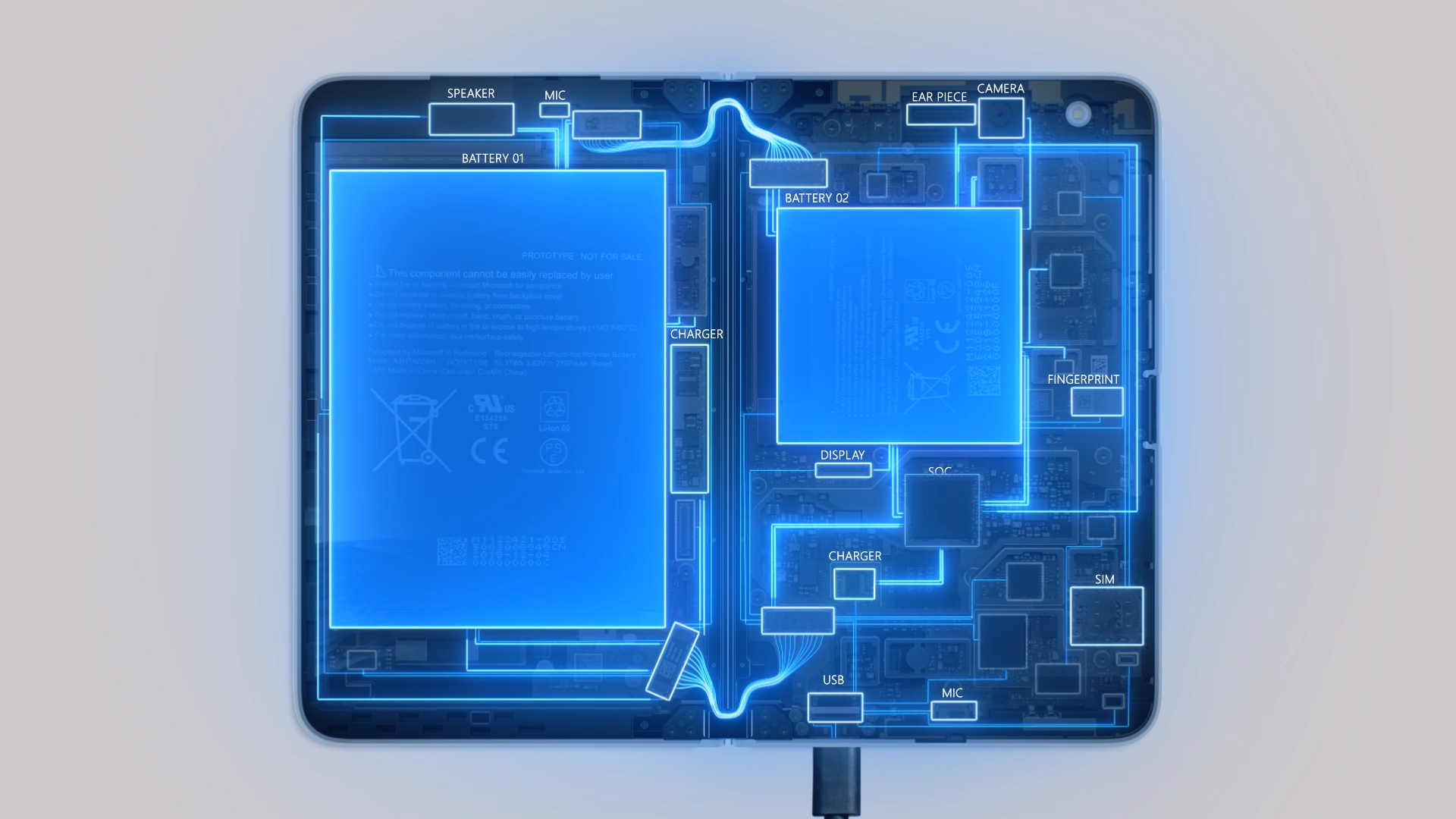
This 360-degree hinge is Microsoft's smallest hinge ever. Thanks to this new, innovative hinge, the Duo can open and close in a fluid, effortless manner, but at the same time, there is enough friction and stability to stop at any position. When asked how many times the Duo can fold before breaking, a Microsoft spokesperson said, "Until the human is tired of folding. The human will give up before the device breaks."
Stay in the know with Laptop Mag
Get our in-depth reviews, helpful tips, great deals, and the biggest news stories delivered to your inbox.
The Duo's unconventional design also impelled Microsoft to split the Duo's two 3,577 mAh batteries into an asymmetrical configuration. This presented another challenge for the Duo engineers — how can the Duo charge both displays simultaneously in a balanced and proportionate manner? It would do the Duo no good if one display was fed more power than the other while charging. Microsoft didn't divulge how it managed to charge balance both hemispheres, but the engineers ended up solving the conundrum.
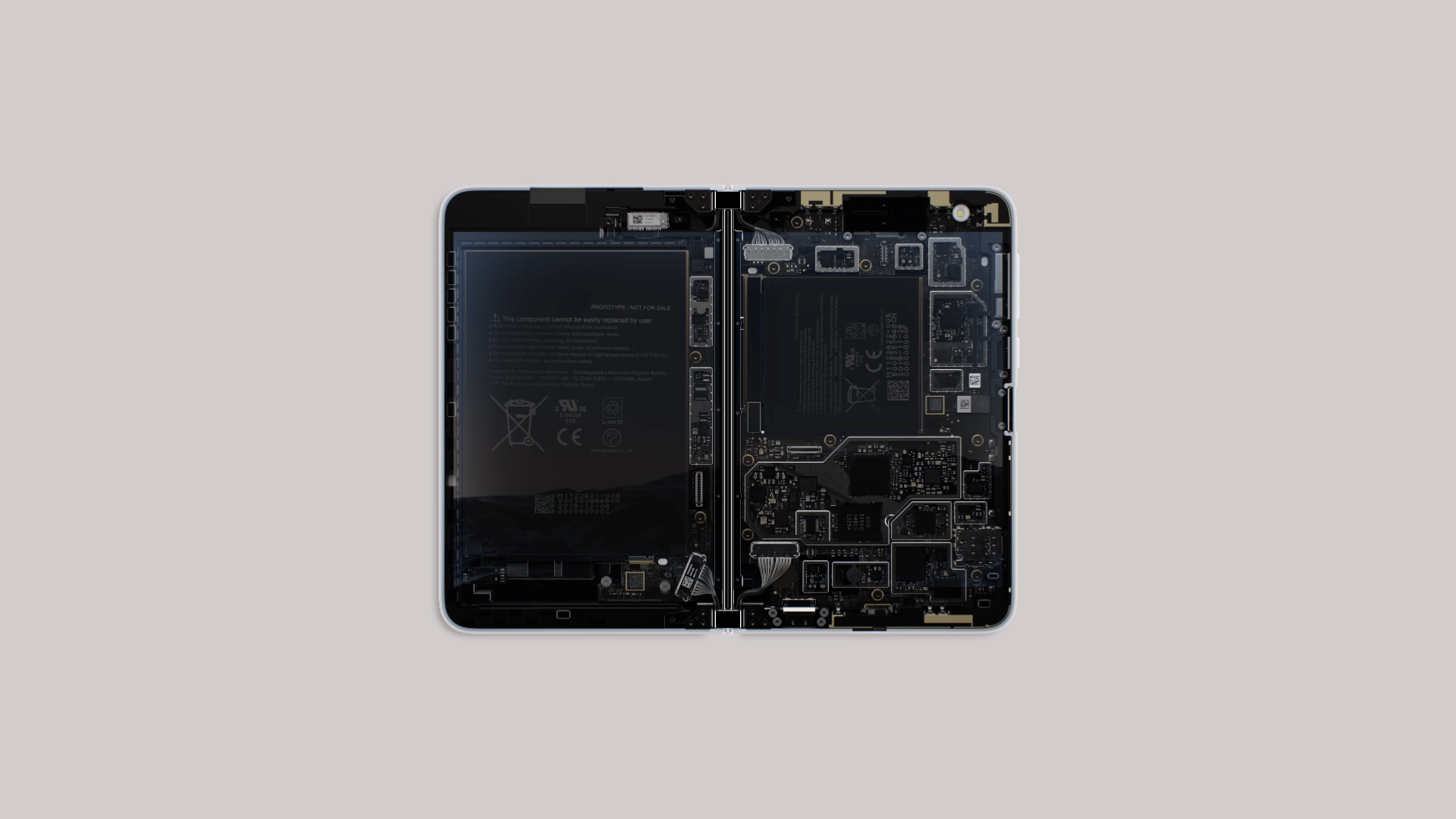
After spending two weeks with the Surface Duo myself, both displays certainly do seem to charge on the same level, and not only that, even the color coverage is relatively the same. On our testing, the left display covered 141% of the DCI-P3 color gamut while the right covered 139%.
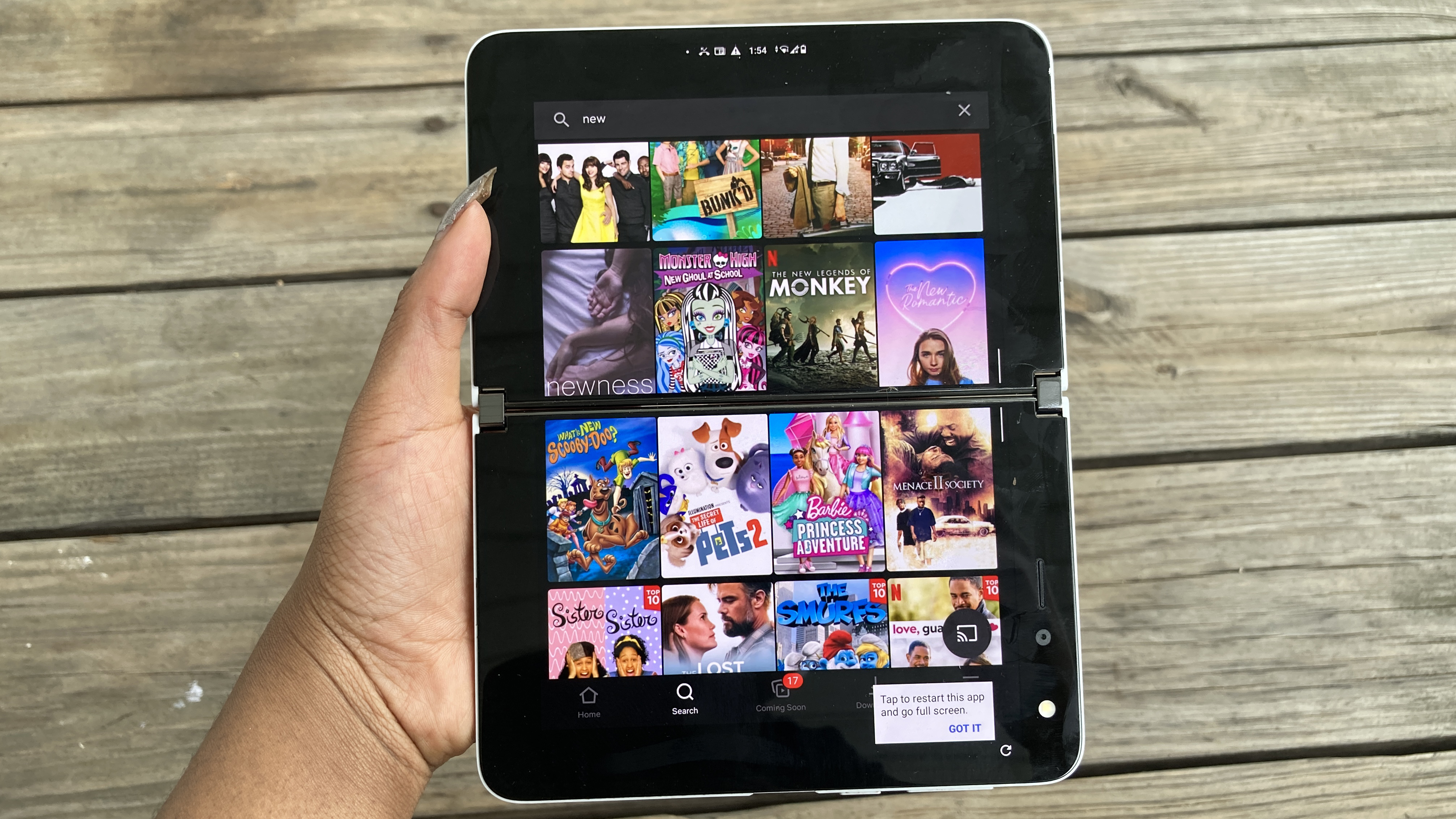
Another interesting fact about the Surface Duo is that it has two motherboards — one for each side. Although these two displays are a part of one device, Microsoft built both hemispheres as if they were two separate, independent entities.
As for the interface, it still needs some tweaking, but if Microsoft can perfect its UI and software, it could be an unstoppable force in the foldable market with flawless hardware components to boot.
Kimberly Gedeon, holding a Master's degree in International Journalism, launched her career as a journalist for MadameNoire's business beat in 2013. She loved translating stuffy stories about the economy, personal finance and investing into digestible, easy-to-understand, entertaining stories for young women of color. During her time on the business beat, she discovered her passion for tech as she dove into articles about tech entrepreneurship, the Consumer Electronics Show (CES) and the latest tablets. After eight years of freelancing, dabbling in a myriad of beats, she's finally found a home at Laptop Mag that accepts her as the crypto-addicted, virtual reality-loving, investing-focused, tech-fascinated nerd she is. Woot!

